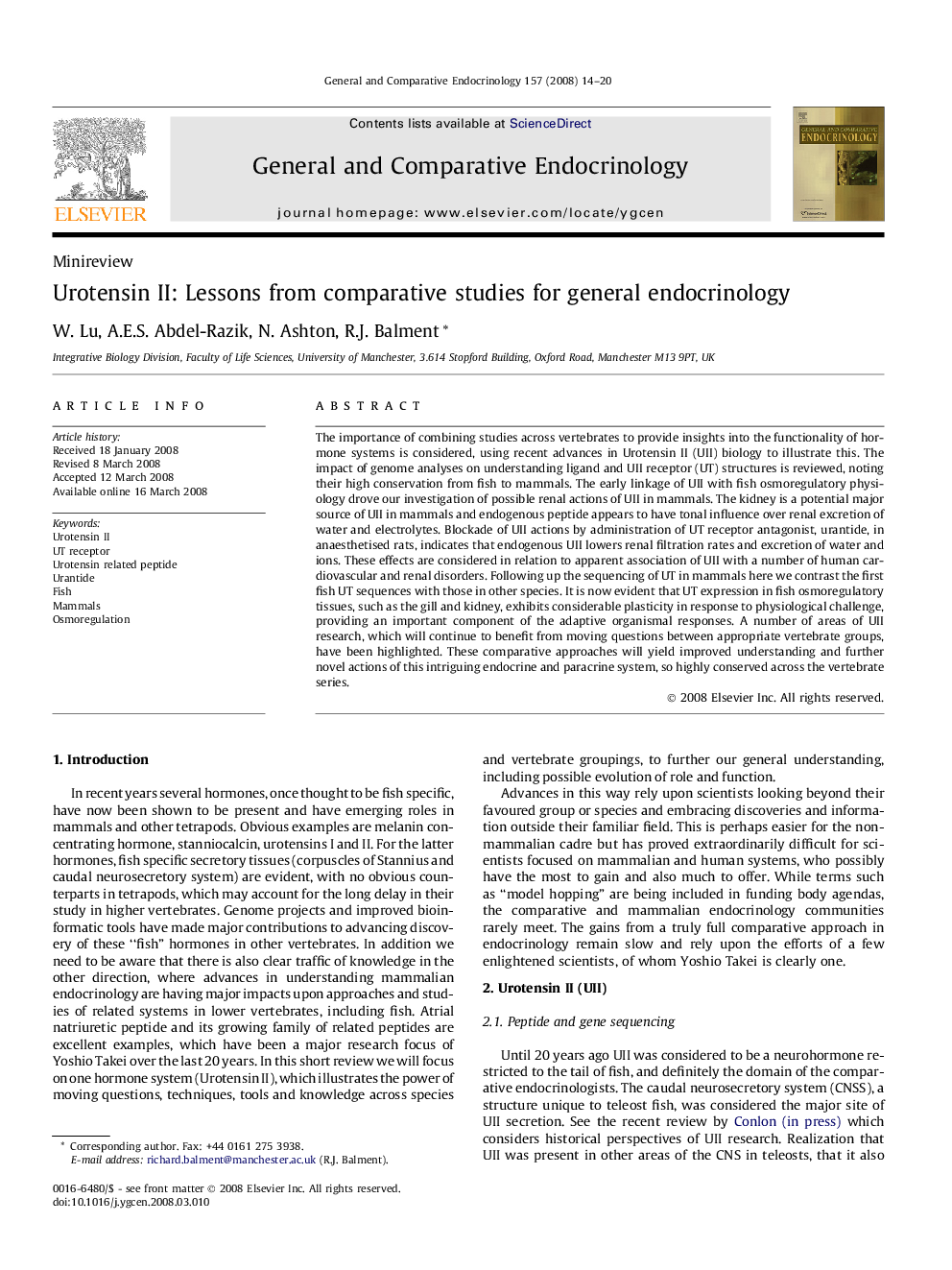| Article ID | Journal | Published Year | Pages | File Type |
|---|---|---|---|---|
| 2801859 | General and Comparative Endocrinology | 2008 | 7 Pages |
The importance of combining studies across vertebrates to provide insights into the functionality of hormone systems is considered, using recent advances in Urotensin II (UII) biology to illustrate this. The impact of genome analyses on understanding ligand and UII receptor (UT) structures is reviewed, noting their high conservation from fish to mammals. The early linkage of UII with fish osmoregulatory physiology drove our investigation of possible renal actions of UII in mammals. The kidney is a potential major source of UII in mammals and endogenous peptide appears to have tonal influence over renal excretion of water and electrolytes. Blockade of UII actions by administration of UT receptor antagonist, urantide, in anaesthetised rats, indicates that endogenous UII lowers renal filtration rates and excretion of water and ions. These effects are considered in relation to apparent association of UII with a number of human cardiovascular and renal disorders. Following up the sequencing of UT in mammals here we contrast the first fish UT sequences with those in other species. It is now evident that UT expression in fish osmoregulatory tissues, such as the gill and kidney, exhibits considerable plasticity in response to physiological challenge, providing an important component of the adaptive organismal responses. A number of areas of UII research, which will continue to benefit from moving questions between appropriate vertebrate groups, have been highlighted. These comparative approaches will yield improved understanding and further novel actions of this intriguing endocrine and paracrine system, so highly conserved across the vertebrate series.
